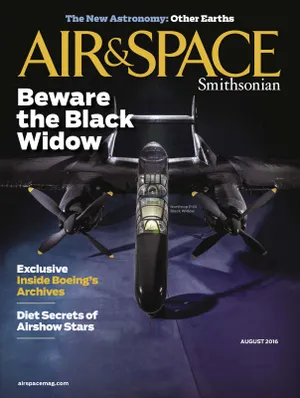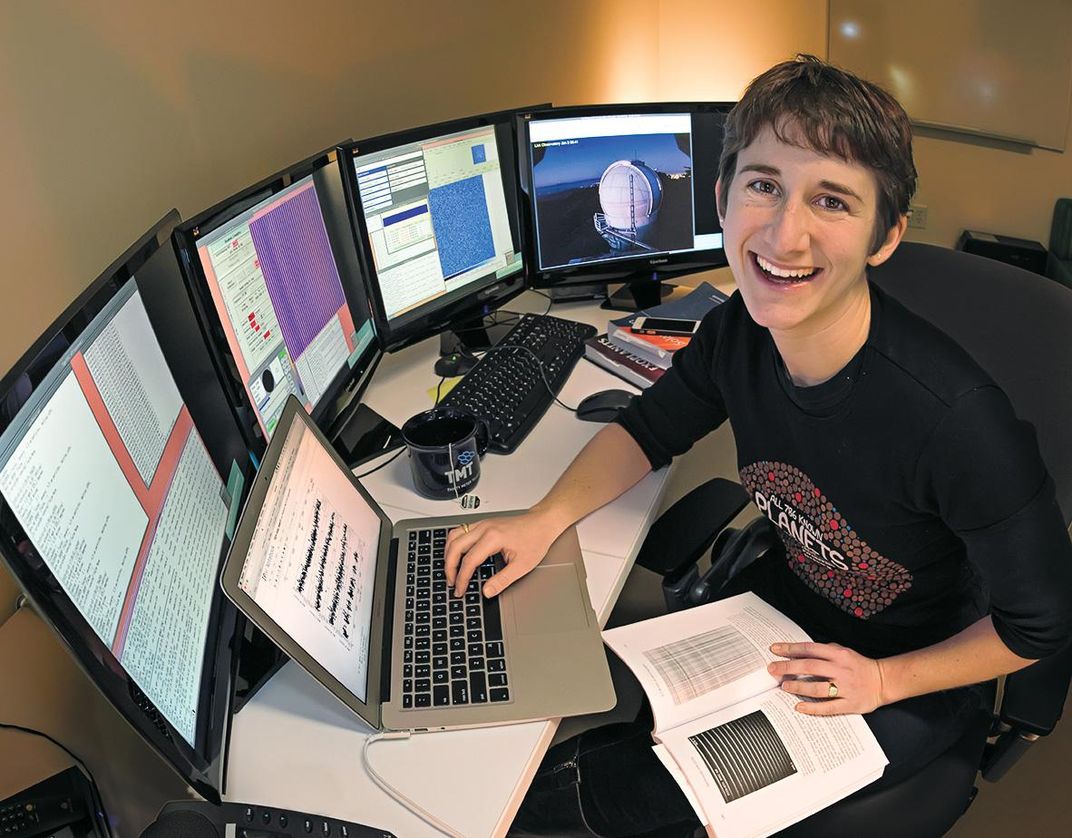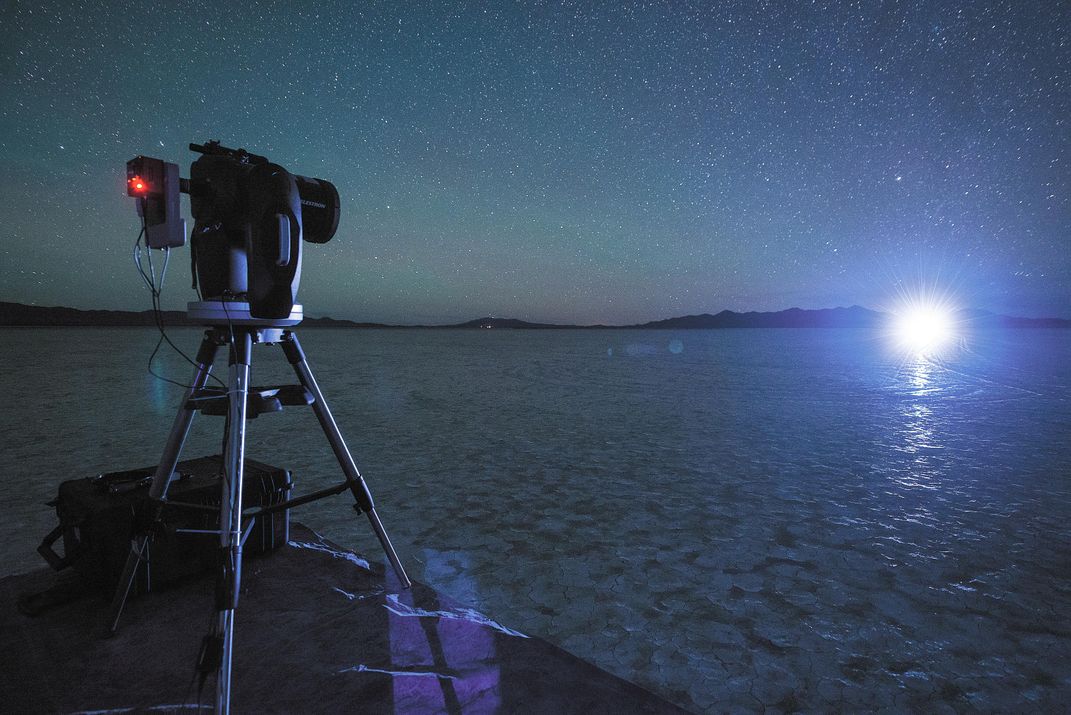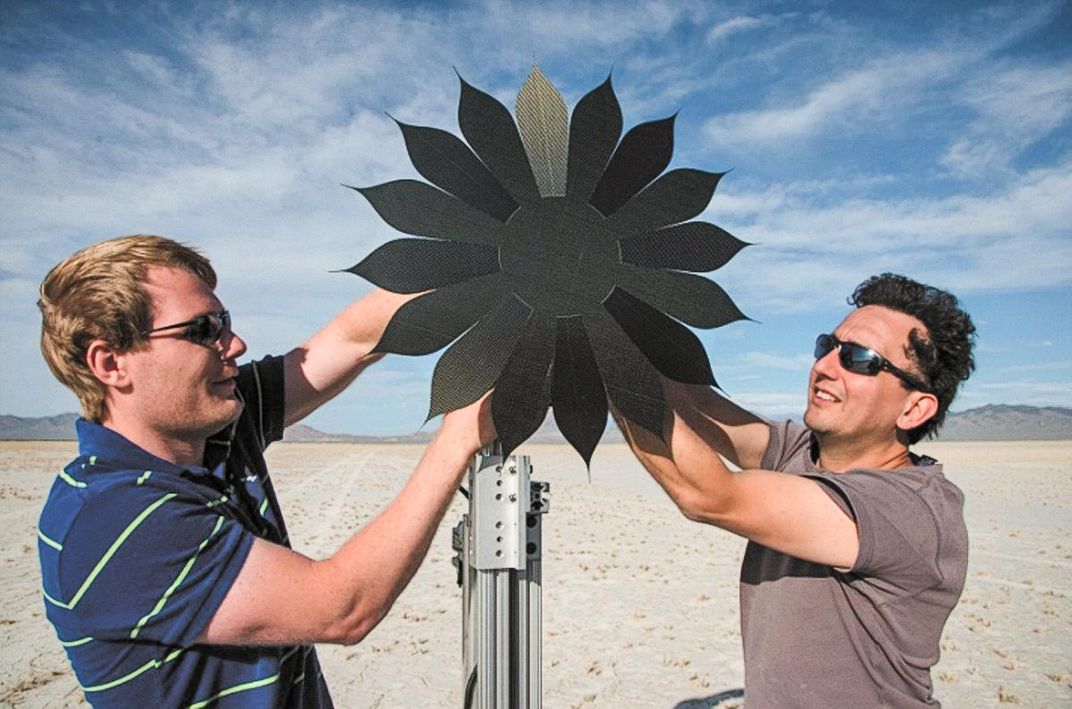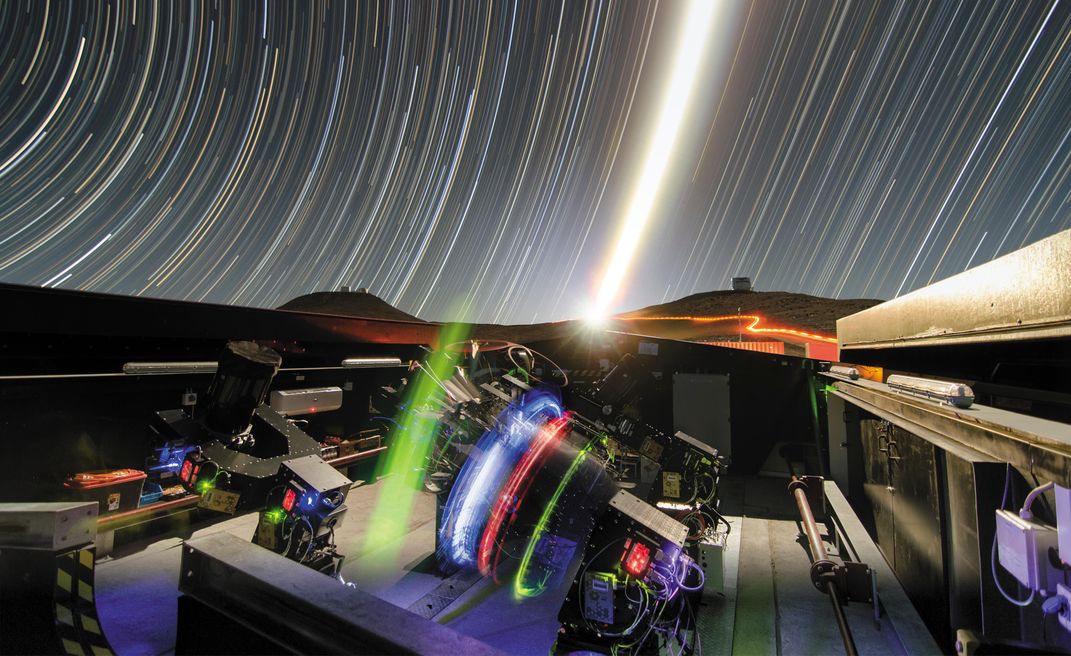Kepler’s Children: Meet The Scientists Searching for Other Earths
How NASA’s planet-hunting telescope kicked off a revolution.
/https://tf-cmsv2-smithsonianmag-media.s3.amazonaws.com/filer/6e/70/6e7078e7-2855-4753-97a2-0430d0fb984e/keplers-children.jpg)
Dave Latham had to be talked into making the discovery for which he’s probably best known. One Friday afternoon in September 1984, Israeli astronomer Tsevi Mazeh, whom he’d never met, paid a visit to his office at the Harvard-Smithsonian Center for Astrophysics. Mazeh had an idea: Use the Center’s “digital speedometer”—an instrument that measured the motions of distant stars by recording Doppler shifts in their spectra—to look for slight wobbles caused by the tug of Jupiter-size planets. Latham objected that his instrument wasn’t nearly sensitive enough. It could measure these radial velocities down to a few hundred meters per second, but Jupiter’s tugging effect on our sun, for example, is just 12 meters per second. What if the planet were much closer to its star, Mazeh wondered. Big planets don’t orbit that close, answered Latham, citing then-current theory about how planets formed. Don’t always be bound by what the theorists say, countered Mazeh.
In his youth, Latham had raced motorcycles, and he was pretty good—skilled enough to be sponsored by Yankee Motors in international competition in the 1970s. He raced into his early 30s, but knew it was time to quit when he wasn’t falling off the motorcycle at least once in every race. “That meant I wasn’t taking enough risk,” he says today.
Latham considered the risks in Mazeh’s proposal. Then, after a two-hour discussion, they agreed, “Oh what the hell. Let’s try it.”
Five years later, the scientists published a paper in the journal Nature reporting that a star called HD 114762 had an “unseen companion.” Not willing to claim something their data couldn’t support, they wrote that the companion was probably a brown dwarf (intermediate between a planet and a star) but “might be a giant planet.” HD 114762b’s existence was confirmed in 1991, and, although there is still a chance it’s a brown dwarf, astronomers now generally agree that Latham and Mazeh co-discovered the first exoplanet around an ordinary star.
The search for exoplanets muddled along like this, with tantalizing maybes and one-off probablys, until 1995, when Michel Mayor and Didier Queloz at the University of Geneva reported finding a planet called 51 Pegasi b. This time other astronomers immediately confirmed the discovery. Using the same technique Latham had used—measuring radial velocity—but with sensitivities now down in the tens of meters per second, the Swiss team, along with Geoff Marcy and Paul Butler at the University of California at Berkeley, started finding large planets orbiting close to ordinary stars. Theory said these “hot Jupiters” shouldn’t exist, yet there they were.
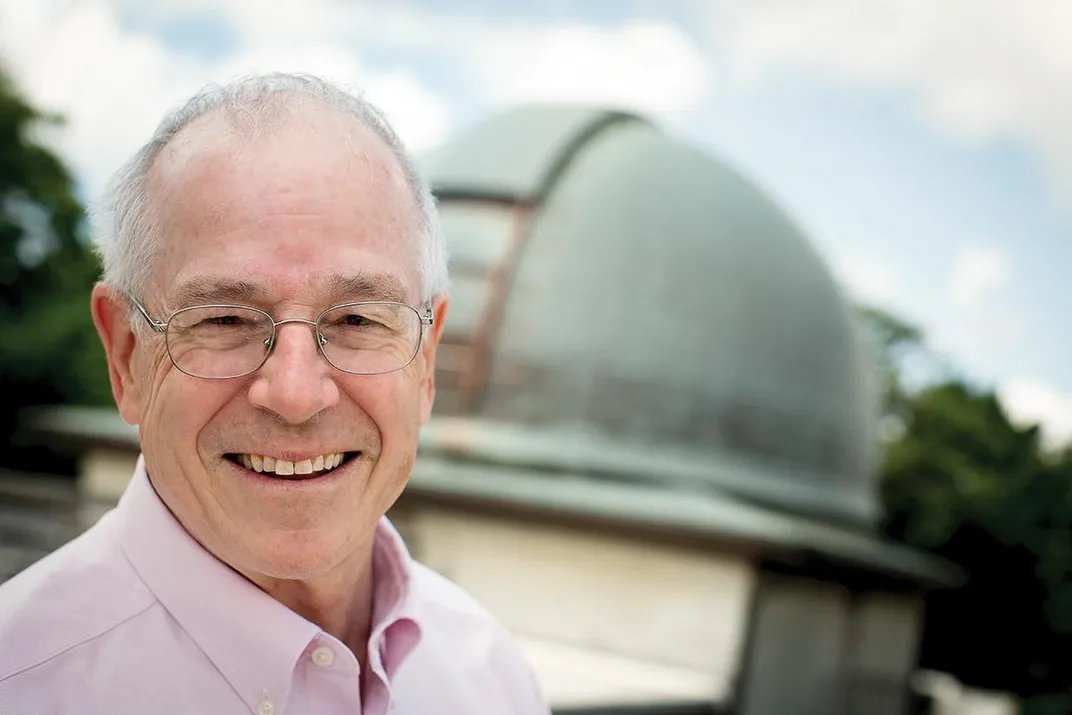
Those early discoveries marked the birth of exoplanet studies, but it was Bill Borucki’s Kepler mission that firmly established it as one of the most exciting fields in modern science. A soft-spoken man with legendary persistence, Borucki spent 20 years trying to sell NASA and his fellow scientists on an alternative method of detecting exoplanets: using an exquisitely sensitive light meter to record the slight dimming of a star whenever a planet travels across, or transits, its disk. The Kepler telescope, launched in 2009, is one of those few astronomical tools, like the 200-inch reflector on Mt. Palomar or the Hubble Space Telescope, whose name became familiar to the general public. And rightly so. It’s called a planet finder, but that was never its purpose, exactly. Staring for years at the same field of 150,000 stars to record transits, Kepler’s job was to gather statistics. Before going to the trouble and expense of building real planet finders—telescopes powerful enough to image exoplanets and probe their atmospheres—scientists wanted to know whether planets are common enough in our galaxy to justify the effort.
The answer was a resounding yes. The Kepler telescope has found more than 2,300 confirmed planets, roughly two-thirds of the total number discovered to date. Many more candidates await confirmation, and Kepler already has given astronomers the statistical confidence to believe that in our galaxy, planets are at least as common as stars. An estimated 40 billion worlds in the Milky Way could be hospitable to life, perhaps even other intelligent species. Finding life is what we want most from the space program. And Kepler has opened the door.
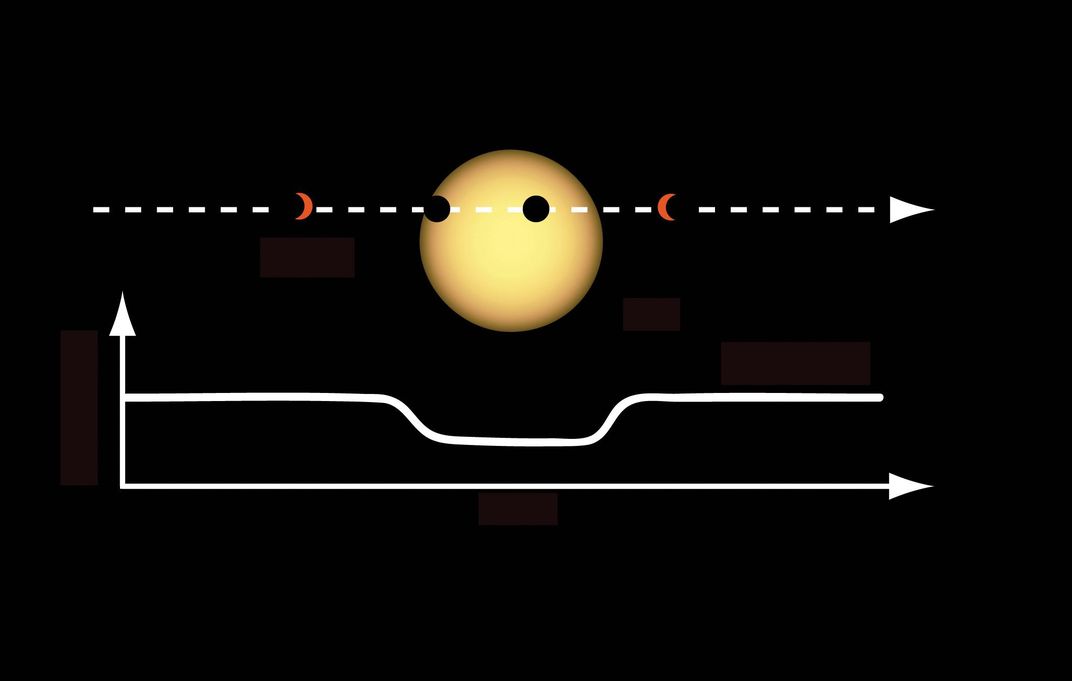
In the early 2010s the number of confirmed exoplanets jumped from a few dozen to thousands, due mostly to Kepler but also to constant improvements in radial velocity (RV) searches. And as those discoveries increased, the number of people working in the field started to climb as well. In 2013, at a conference near San Francisco to discuss Kepler results, William Cochran, a University of Texas astronomer and one of the pioneers in the field (it was he who confirmed Dave Latham’s planet in 1991), looked out with satisfaction and some amazement at the auditorium full of scientists, many of them young. When he started in the field, he recalled, “all the people working on exoplanets could meet in my office.” Even as late as the early 2000s, he knew everyone in the field personally. Now, he said, “I come to this conference and wonder, ‘Who are all these people?’ And that’s a good thing.”
**********
LAUREN WEISS, who just earned her Ph.D. from the University of California at Berkeley in May, typifies the new, post-Kepler generation of exoplanetologists, although you could hardly call her a typical person. When she was 14, she started working on a novel (writing was her first love) about the Mayan calendar apocalypse, and figured she’d better get her facts straight. So she took a summer course in astronomy and got hooked. At Harvard, her junior thesis was on dark matter, another great mystery of modern science. Then two things happened to shift her focus. A NASA satellite called Fermi discovered that gamma rays blasting from the center of the Milky Way weren’t connected to dark matter after all, a disappointing revelation. At the same time, the first Kepler planets were being announced, and David Charbonneau, one of Latham’s colleagues at Harvard and, like Latham, a Kepler co-investigator, invited Weiss to start working with the new exoplanet data.
She remembers that as “such an exciting time.” Not only did she find that she liked working with telescope data, she also got to see historic results as they came in. Weiss went to Berkeley for grad school to study with another leader in the field, Geoff Marcy. Her proudest accomplishment to date is a 2014 paper she authored with Marcy using statistics to show that planets with less than 1.5 times Earth’s mass are likely to be rocky, while planets with greater mass are likely to be enveloped by thick atmospheres. Such distinctions may turn out to be critical as scientists narrow their focus to those planets most likely to have life.
Like many exoplanetologists, Weiss has a hand in lots of projects. She works with Berkeley’s Automated Planet Finder, a robotic telescope at the nearby Lick Observatory that moves from one target star to the next, night after night, looking for the RV signature of a planet’s tug. She’s involved in Breakthrough Listen, a new $100 million project to step up the search for extraterrestrial intelligence (see “Listen to the Nearest Million Stars,” June/July 2016). She’s also developing an instrument that could check planets and moons within our solar system for biosignatures—chemical or physical markers indicating the presence of life. For Weiss, questions such as how planets formed and where life might have evolved are interconnected, and they’re profound. “What’s our real, physical genesis story?” she asks. “Is there anyone else out there?”
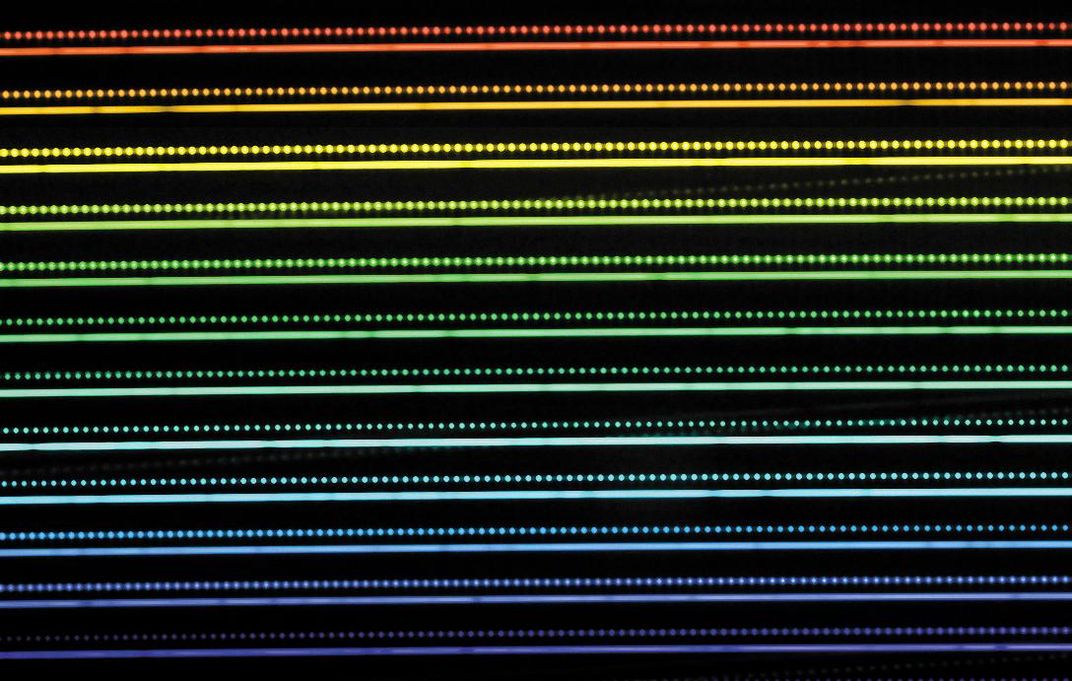
Kepler has given rise—or new hope—to dozens of planet-hunting projects around the world, from small RV searches to large space observatories planned for launch in the 2020s and 2030s. NASA’s next big step to advance the search will be the Transiting Exoplanet Survey Satellite, or TESS, due to launch in December 2017 into a carefully designed, high Earth orbit from which it can survey the entire sky over its two-year primary mission. The planets in Kepler’s narrow field of view were as far as 3,000 light-years away, too distant for telescopes to make out any detail. TESS will be searching for planets in our neighborhood. Its four cameras will monitor more than 200,000 bright, close stars (within 200 light-years) and look for transits; it is expected to discover about 1,600 nearby planets, including several dozen around the size of Earth and hundreds more “super-Earths,” up to twice our planet’s size. By design, the TESS planets will be those best suited for follow-up study by other instruments, including Hubble’s successor, the James Webb Space Telescope, due to launch in 2018.
At 76, Latham is heading the science team for TESS. One of the first scientists who could call himself an exoplanetologist, he also is a co-investigator on the Kepler mission. He comes from an accomplished family—his inventor father founded a medical technology business in 1971 that’s worth more than a billion dollars today—and by tradition, the Lathams have attended either MIT or Harvard. Dave went to both. In 1962, as a grad student who had switched from math to astronomy, he attended Carl Sagan’s first class as a Harvard instructor. After earning his Ph.D., Latham stayed on at the Harvard-Smithsonian Center for Astrophysics in Massachusetts, and he’s still there as a lecturer and senior astronomer 46 years later.
The TESS project’s principal investigator, George Ricker, is right next door, at MIT. Ricker had spent most of his career working in a completely different area of astronomy, studying gamma-ray and X-ray emissions from some of the most violent explosions in the universe. That was his field when he met Latham in Chicago—oddly, at a meeting of the American Medical Association. Both their wives are physicians, and the two space scientists struck up a conversation while hanging out in the hotel. Ricker was at the time the principal investigator for a NASA mission, HETE-2, that watched the sky for gamma-ray bursts. Could that same kind of satellite be used to look for transiting planets, they asked themselves. Thus began Ricker’s conversion to exoplanet science, and more than a decade later, he and Latham are steering a project they hope will yield a wealth of targets for their colleagues to investigate in the years to come.
The two share certain traits, including a parsimonious delight in finding the cheapest hotel or rental car when on official travel. (It’s not easy matching Latham’s frugality. This is a guy who has held on to the same fountain pen for “maybe 20 years.” He keeps chickens on his farm 25 miles outside Boston, not because he likes chickens but because he can claim a tax break for farm income.)
Latham’s role as head of the science team puts this sense of economy, or maybe efficiency, to good use. One of his main jobs is to orchestrate the vital TESS follow-up campaign, in which dozens of instruments around the world, both ground- and space-based, will help confirm the TESS discoveries and supplement the transit data with other information. Kepler suffered, and still suffers, from a frustrating bottleneck: There simply hasn’t been enough telescope time to verify all the candidate planets, so thousands are still unconfirmed. In most cases, Kepler’s transit light curves reveal only a planet’s size and orbit. The mass comes from RV observations, which are more labor- and time-intensive. And you need both size and mass to distinguish a small, rocky Earth from a bigger, fluffier gas ball. Despite the many thousands of Kepler discoveries, scientists have complete information for relatively few small planets, which are the ones that are most interesting.
Fortunately for the TESS project, Latham is a natural collaborator, social and outgoing. A wine connoisseur who holds regular tastings, he has strong connections in both the United States and Europe. The field of exoplanetology is well stocked with former Harvard students, postdocs, and research associates, including Lisa Kaltenegger, who now heads the Carl Sagan Institute for exoplanet studies at Cornell, and Sara Seager of MIT, a recipient of a MacArthur “genius grant” Fellowship who, in addition to being one of the dynamos in the field, is one of its most visible public faces. Both are on the TESS team, along with 30 other scientists.
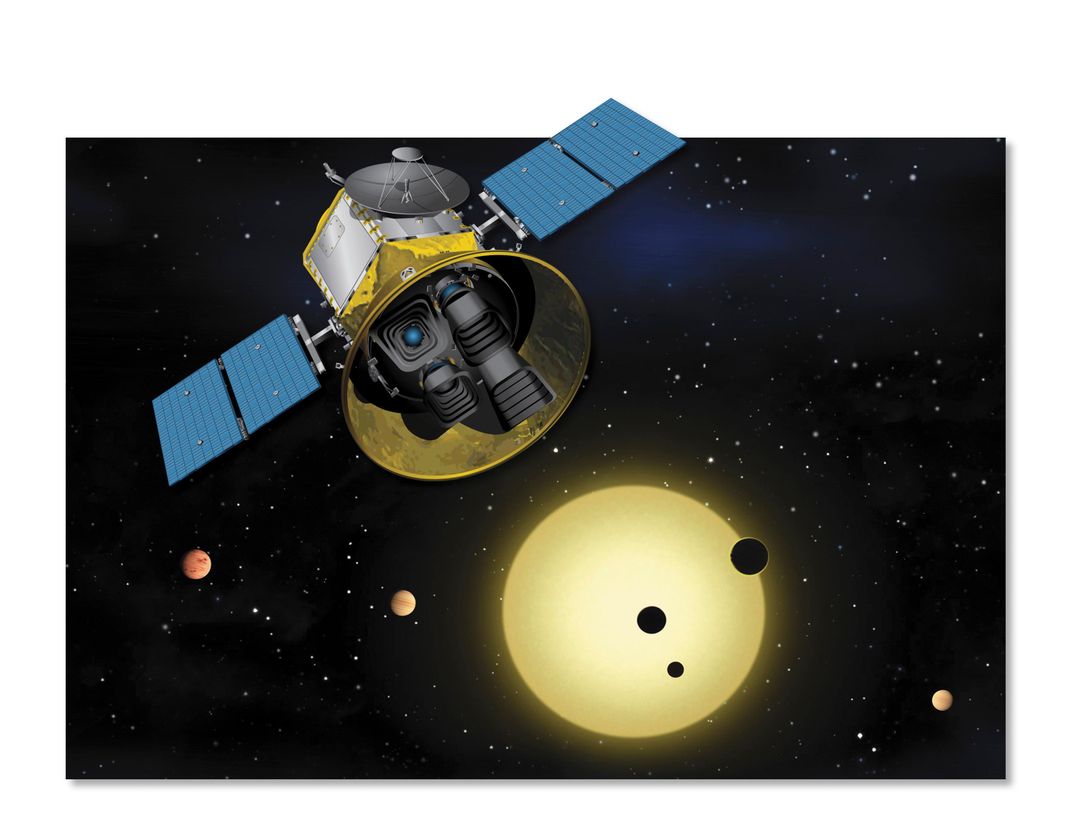
There’s plenty of work for everyone. A lot of effort has gone into analyzing the Kepler transit data to weed out the false positives—signals due to binary stars or other objects that could easily be mistaken for planets in the TESS survey too. The team also is finalizing its list of 200,000 target stars. They started with around 600 million objects in dozens of existing star catalogs, and selecting the best ones for TESS to observe has been an enormous task. Broad theoretical questions come into play. Does looking for life necessarily mean looking for planets around stars like our own? Is the concept of a temperate “habitable zone,” where water can exist on a planet’s surface, too Earth-centric? At this early stage in the search for habitable worlds, scientists need to keep their minds open to all possibilities.
They also need new tools.
**********
SCOTT GAUDI started graduate school at Ohio State in 1995, just a few months before the discovery of 51 Pegasi b was announced, and is today one of the field’s leading strategists. A past chair of NASA’s exoplanet advisory committee, he has a good overview of the state of current knowledge, especially where the gaps are. And he makes this surprising observation: “If every single star hosted a solar system like ours, Kepler would have found basically zero planets. They may have found a few, but they certainly wouldn’t have found thousands.”
This is not meant as a slam to Kepler, which Gaudi says has been “fantastic.” It’s intended to show the limitations of both the transit method and the RV method. Both techniques are biased toward finding planets orbiting close to their stars. In a solar system like ours, Kepler would see only out to roughly the orbit of Mars. Any small planets, from Jupiter outward, would be invisible to alien astronomers relying only on transit and RV data.
“A lot of people make generalizations about what exoplanets are like, based on the Kepler results, but the truth is that it’s giving us a very incomplete picture,” Gaudi says.
He believes he has a solution, or at least a partial one. Gaudi is among the leading practitioners of another planet-finding technique, called microlensing, which, like Bill Borucki’s transit measurements, other astronomers initially viewed with suspicion. Today he says microlensing is changing from the “poor stepchild” of exoplanet studies to “one of the premier methods.” The technique takes advantage of the powerful effect a star’s gravity has on light. If a telescope monitors a field of millions of stars for long enough, some of them will temporarily brighten—for anywhere from days to months—before returning to normal. That’s because some other, closer star has moved between it and us, and the intervening star’s gravity has bent the light from the distant star, magnifying it like an optical lens. The signal is unpredictable—it depends on the random alignment of moving stars—but it’s also quite pronounced, much stronger than the one-part-in-10,000 dimming caused by a transit.
What does this have to do with exoplanets? If the intervening, lensing star also has a planet circling it, the planet’s gravity will briefly act as a second lens, producing a little hitch in the light curve that astronomers see. The signal is “more or less unmistakable,” says Gaudi, so microlensing has the advantage of not producing false positives. The method has drawbacks, though, which account for some of the early skepticism. It typically gives you the mass of a lensing planet and the distance from its host star, but nothing about the star itself. And because it depends on an unpredictable, one-time alignment, you can’t go back to study the planet in more detail. “Once you detect it, it’s basically gone,” says Gaudi.
Ground-based microlensing first found a planet in 2004; since then, it has discovered a few dozen more. This summer the Kepler telescope (which has finished its original mission, to count transits in a single region of the sky, and is now being aimed at different targets) looked for microlensed planets in the star-rich center of the Milky Way galaxy. Even while he waits for the results of that study, Gaudi is deep in the planning phase for NASA’s Wide-Field Infrared Space Telescope (WFIRST), due to launch in the mid-2020s. This Hubble-size observatory will address astronomy’s two hottest topics: dark energy and exoplanets. By Gaudi’s estimate, a WFIRST microlensing search of 100 million stars should yield thousands of new planets, including a few hundred that are Earth-size and smaller, down to the mass of Mars. That should give astronomers a more complete picture of the nature and full scope of solar systems beyond our own.
Exoplanetologists preparing for space-based transit missions know that follow-up measurements from the ground will be vital. In particular, says Gaudi, RV measurements to get the mass of each new planet is “the one method that we’re always going to need.”
To make those RV follow-ups for Kepler and TESS, a team of scientists from the University of Geneva, Latham’s Harvard-Smithsonian group, and other institutions built the HARPS-N (“N” for “North”) spectrograph in the Canary Islands. HARPS-N can detect velocity changes down to about one meter (three feet) per second. Pause for a moment to let that sink in. One meter per second is a typical person’s walking speed. Astronomers are now able to measure that movement in a star 500 trillion miles away. Francesco Pepe, who leads the University of Geneva’s HARPS team, calls this “one of the most precise measurements in physics.”
Still, it’s not good enough. An Earth-size planet orbiting at Earth’s distance from the sun would exert a tug of only 9 or 10 centimeters per second, or a velocity 10 times lower than HARPS can measure. That’s walking speed for a tortoise. Four teams around the world are already working on the next generation of spectrographs that, coupled with large ground-based telescopes, aim to push the RV detection limit even lower.
Suvrath Mahadevan of Pennsylvania State University leads one of the efforts, funded by the National Science Foundation and NASA, to build an RV instrument for the 3.5-meter WIYN telescope on Arizona’s Kitt Peak. Called NEID (which means “to discover/visualize” in the language of the local Tohono O’odham people), the spectrograph is scheduled to begin operating in 2019.
As an undergraduate, Mahadevan studied engineering physics, which, he says, “was as close as I could get to astronomy” in India. He still enjoys the combination of science and technology. “I build instruments for science I’m interested in that can’t be done with existing instruments,” he says. “And I’m actually a user. I don’t build them and say ‘Here are the keys’ and walk away.” The scientific problem that interests him currently is the discovery of low-mass planets around both sun-like stars (NEID’s job) and cooler red dwarf stars (for a different telescope, he’s building the Habitable Zone Planet Finder, a spectrograph that will work in the infrared).
When NASA requested bids to build a next-generation spectrograph, it asked for performance down to the 10 cm./second level. Mahadevan’s team will try. As of today, they only feel comfortable promising 20 to 30 centimeters, and even that will be tough. The instrument has to be maintained in a vacuum chamber, with protection from all kinds of unwanted noise; footsteps in the same room, even the weather outside, can affect the measurement. “We think there are unknowns, including the stars themselves, that make it very hard to know if we’ll actually get down to 10 centimeters,” he says. Mahadevan is talking about the swirling magnetic fields and eddies of superheated gas within stars themselves, which induce motions that can masquerade as a planet’s signal. It’s a significant source of confusion, and astronomers agree that as RV measurement gets more subtle, they will need a better understanding of stars’ internal dynamics. “That’s the one that keeps us all awake at night,” says Mahadevan.
While he and his colleagues push the limits of ground-based spectrographs, other groups are planning space telescopes that could someday take images of distant planets and probe their atmospheres with enough spectral resolution to reveal their chemistry. Thought to be virtually impossible 20 years ago, direct imaging of Earth-size planets may now be within reach, though it is still uncharted territory, and full of engineering challenges and technical risk. Making out the feeble light of a planet in the glare of its host star is “pretty atrociously hard,” admits Gaudi, who, along with Sara Seager at MIT, is helping to set the science requirements for one of the telescope concepts under consideration for the 2030s. Called HabEx (Habitable Exoplanet Imaging Mission), the telescope would try to mask as much of the light from the star as possible with an internal light-blocker called a coronagraph or an external “starshade,” or maybe both.
From another star system, Earth would appear 10 billion times fainter than the sun. The problem is often compared to an observer trying to see a firefly buzzing around a spotlight, when the observer is in New York and the spotlight is in California. Gaudi became curious as to whether the analogy was actually true. “After going through a lot of web pages, figuring out what a ‘candela’ is, then how many candelas a firefly puts out, I found that fireflies are about a thousand times brighter compared to a spotlight than Earth is compared to the sun. So the analogy is even easier than what we’re trying to do.”
The WFIRST space telescope of the 2020s will be fitted with a coronagraph, and possibly a starshade, to attempt direct imaging of large planets, with a goal of achieving contrast levels as low as a billion to one. Maggie Turnbull of the Global Science Institute in Wisconsin leads one of the science teams for the coronagraph. She started her career in astronomy, saw the movie Contact and switched to biology, then switched back to astronomy, at one point helping Jill Tarter (the scientist on whom Jodie Foster’s character in Contact was based) put together a catalog of nearby planets that are potentially habitable. Although astrobiology is still very much an interest, Turnbull thinks detailed speculation about alien life is probably premature. “Truth be told, I feel like we just keep saying the same things over and over again,” she says. “There’s only so much you can really say. (A) We don’t know anything, and (B) The first generation of imaging missions is going to be very low-performance, and we’re just going to have to live with whatever we can get, to start out. Biology isn’t coming into it in a strong way.” At least not yet.
At the age of 50, Swiss astronomer Didier Queloz can look back on how the field has matured since 1995, when he and Michel Mayor made headlines around the world with their announcement of 51 Pegasi b. Although he says Kepler has advanced the American exoplanet community, Queloz thinks Europe is ahead of the United States at the moment. The Geneva-built ESPRESSO spectrograph, the first of the new, 10 cm./second RV instruments, is due to be installed on the Very Large Telescope in Chile later this year. Another major European project, the Next-Generation Transit Survey—an array of small, robotic telescopes designed to spot the transits of “super-Earths” intermediate in size between Earth and Neptune—started operating on the same Chilean mountaintop last year.
Queloz himself leads the science team for CHEOPS, a transit-spotting spacecraft scheduled to launch around the same time as TESS. It’s designed as a follow-up mission, not a discovery mission. Using targets provided by TESS and the new ground-based RV surveys, it will collect very precise transit light curves for the brightest stars in order to identify the size and number of planets orbiting them. CHEOPS is a European Space Agency project, but it also represents a significant investment by the Swiss government, so politicians are sharing in the risk. “We have been asked not to fail,” Queloz says with a laugh.
His job these days sounds like what Dave Latham has spent many years doing: building bridges, making connections, trying to coordinate with other projects to achieve the greatest scientific efficiency. This summer some 400 exoplanetologists met in Davos, Switzerland, to talk over the problems and opportunities in their field—“400 brains, with lots of ideas,” Queloz says, marveling at the turnout.
You get the sense that nobody worries as much anymore about who discovered this or that new planet. It’s like claiming to have found the first tree in a forest. Planets, Kepler has shown us, are everywhere. The trick now is to understand them, and find the ones that support life.
